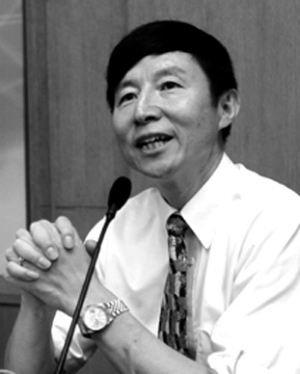 By Jun Ni, Dean of the UM-SJTU Joint Institute, Scholar of “1000 People Program” of the Chinese government, Shien-Ming (Sam) Wu Collegiate Professor of Manufacturing Science, Tenured Professor of Mechanical Engineering at the University of Michigan
By Jun Ni, Dean of the UM-SJTU Joint Institute, Scholar of “1000 People Program” of the Chinese government, Shien-Ming (Sam) Wu Collegiate Professor of Manufacturing Science, Tenured Professor of Mechanical Engineering at the University of Michigan
Summary: To educate outstanding engineers, it is important to cultivate their ability to discover problems, analyze the problems, and solve the problems. In some foreign universities, many problems are open-ended; there is no right or wrong answer and students can challenge teachers’ solutions. Trained in this way, students can think independently and build self-confidence. When students realize that any trial to solve the problems is encouraged and has potential for success, their self-confidence is reinforced.
In China, there are 2,100,000 engineers, with 35% of college students majoring in engineering. China is number one in the world in terms of quantity of currently employed engineers or reserved engineers. However, according to the World Competitiveness Report published in Lausanne, Switzerland, China’s “qualified engineers” rank the 48th out of 55 countries in both quantity and quality. According to Fortune magazine, 540,000 American engineers meet the requirement for globalization, while only 160,000 Chinese engineers qualify, less than ten percent of the total pool. India, on the other hand, boasts more than 70%. Moreover, to create one unit of GDP, China needs 3.68 times as many engineers as Japan.
Why can’t we produce outstanding engineers from such a large pool? This is an important issue to address. The critical capability of an engineer is to discover problems and solve the problems. Most Chinese universities just impart knowledge. Based on the teaching material and homework, most teachers assign difficult but solvable problems, and students can solve the equations quickly and skillfully. Chinese students greatly surpass foreign students in this ability. However, once the students graduate and take part in the real-world engineering projects, they mostly cannot find the equations to solve. Therefore, to produce outstanding engineers, it is imperative to cultivate the students’ ability to discover problems, analyze the problems, and finally solve the problems.
In Chinese universities, the majority of problems the students encounter during their learning process have one solution only. Students are used to checking answers with each other. If the answers are same, they think they are okay. This breeds lack of self-confidence. Many foreign universities, on the contrary, assign mostly open-ended problems for which no unique solution exists. There is no right or wrong answer. Each student tries his or her best to find a solution. Even after the professor suggests a solution, students can still challenge it and look for better answers.
This kind of training is dynamic. Gradually, students shed dependency and build up self-confidence. When students realize that any trial to solve the problems is encouraged and has potential for success, their self-confidence is reinforced.
To cultivate outstanding engineers, we have to develop their creativity, team work spirit, communication skills, leadership, and hands-on capability. The last one is critical. In traditional engineering courses, technical lectures are followed by laboratories, where teachers conduct the experiments with students watching, copying down the numbers, and filling the forms to produce lab reports. The students only remember some information but no lasting impression or interests in the subject matter, even less hands-on experience.
Traditional engineering curriculum is set up such that foundation science and math courses are taken during the first and second years, specialized courses during the third year, and the last semester of the senior year is dedicated to graduation design projects. This curriculum yields poor results. In the eighth semester, most students have forgotten what they have learned in the previous four years so they fail to produce meaningful design projects. To use a Kung Fu analogy: Students spent years practicing all the basic moves in martial arts, but in a real battle they don’t know what to do. A good master will send the pupils to fight first. Once they get bruised, the master teaches them all the moves to defend themselves and to attack. In the subsequent battles, students discover what they need to learn and learn more.
By the same analogy, a good engineering education exposes students to real-life situation in the first year to find problems and forces them to analyze and solve the problems. Students keep learning from weakness and practice in the next three years. Thus, students develop much stronger skills than if they followed the traditional Chinese curriculum.
Translated from China Education Daily February 6, 2012, Page 2





